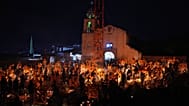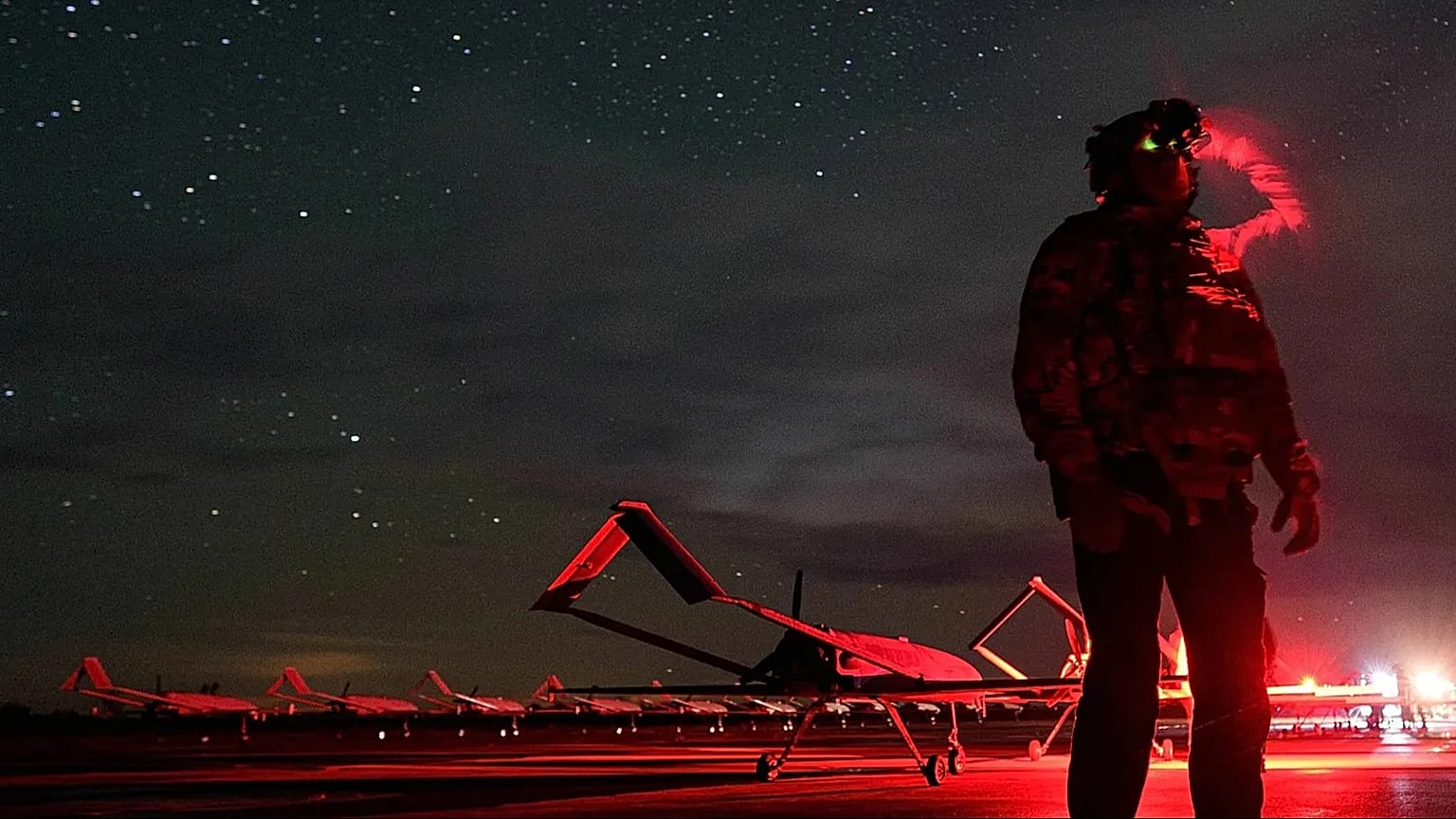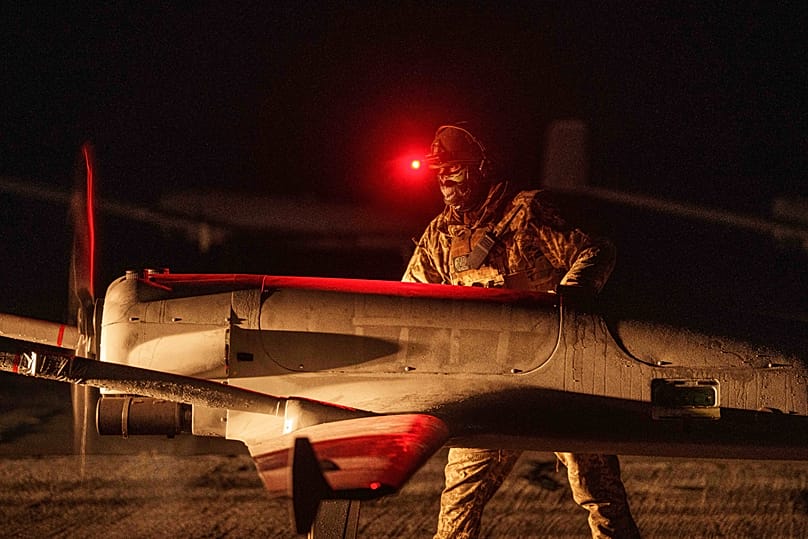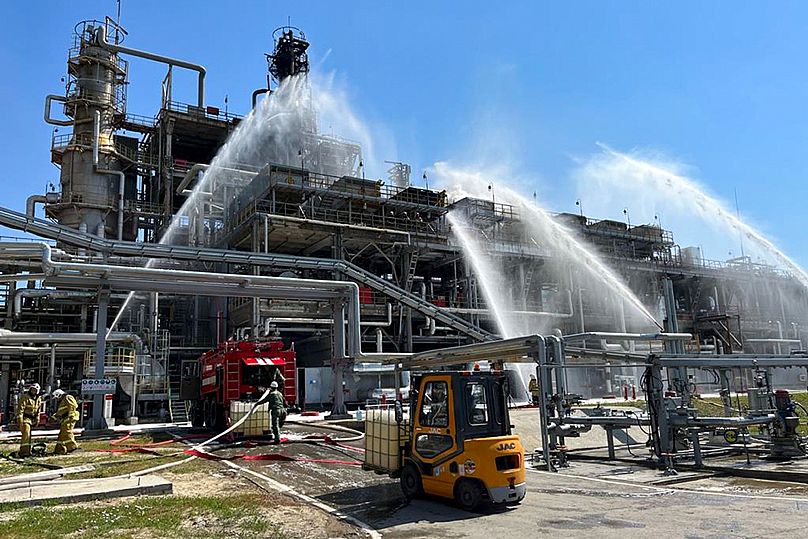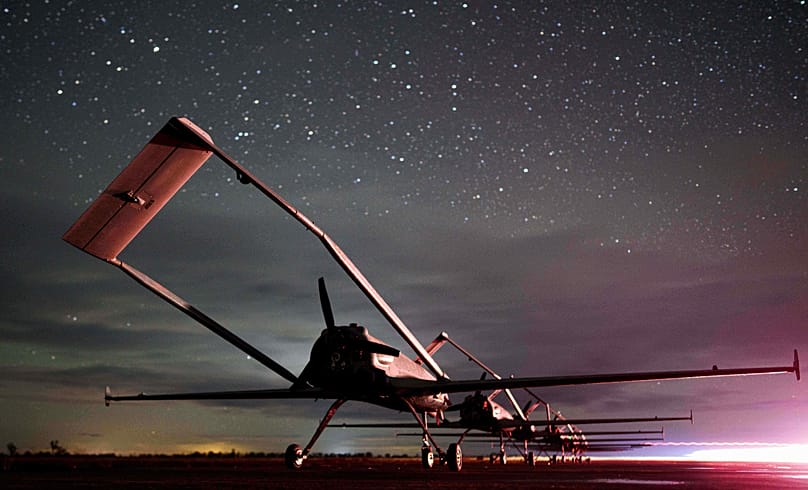Built from parts made in a scattered network of workshops, Ukraine's domestically-produced drones now fly much further than at any point in the war.
At a secret location in rural Ukraine, columns of attack drones are assembled under cover of darkness and in near silence to strike deep inside Russia.
Their targets are strategic: oil refineries, fuel depots and military logistics hubs. Since the summer, Ukraine's long-range drone campaign has ramped up dramatically, pounding energy infrastructure across Russia and stretching Moscow’s air defences thin.
Built from parts made in a scattered network of workshops, these drones now fly much further than at any point in the war.
Officers in body armour move with quick precision; headlamps glow red to stay hidden. Engines sputter like old motorcycles as exhaust fumes drift into the moonless night.
Minutes later, one after another, the drones lift from a makeshift runway and head east.
The strikes have caused gasoline shortages in Russia, even forcing rationing in some regions and underscoring a growing vulnerability in the country's infrastructure.
Drones hammer Russian refineries
Western analysts say the attacks on energy infrastructure so far have had a serious, but not a crippling, effect.
Ukrainian drones have repeatedly hit 16 major Russian refineries, representing about 38% of the country’s nominal refining capacity, according to a recent review by the Carnegie Endowment, a US-based think tank.
But it argues the actual impact has been considerably more limited: most plants resumed operations within weeks and Russia’s refining output has been cushioned by idle capacity and existing fuel surpluses.
The deep strikes have, however, given Kyiv the initiative at an important moment. The United States and Europe are ramping up sanctions on Russia’s oil industry even as Kyiv's request for US long-range Tomahawk missiles has stalled.
President Volodymyr Zelenskyy says Ukraine's improved long-range strike capability is causing real damage, forcing the Kremlin to import fuel and curb exports.
"We believe they’ve lost up to 20% of their gasoline supply — directly as a result of our strikes," he told reporters at a briefing in Kyiv.
At the secret launch site, the commander overseeing the operation, identified only by his call sign, Fidel, in accordance with Ukrainian military regulations, watches through night-vision goggles as the drones climb into the star-filled sky.
"Drones are evolving," Fidel said. "Instead of flying 500 kilometres, now they fly 1,000. Three factors go into a successful operation: the drones, the people and the planning. We want to deliver the best result. For us, this is a holy mission."
No-frills weaponry
Much of Ukraine's fleet is domestically produced. The Liutyi, a workhorse of the nightly attacks, is a waist-high craft with a sausage-shaped body, a propeller at the back and a distinctive triangular tail.
It looks neither sleek nor intimidating but the ease of assembly means it can be kept hidden and constantly tweaked, optimised to slip through heavily monitored frontline airspace.
Typical of Ukraine’s no-frills war production philosophy, the Liutyi, whose name means "fierce" in Ukrainian, has become a symbol of national pride and recently featured on a local postage stamp.
The reach of these drones, with some models doubling in range over the past year to routinely strike targets within a 1,000-kilometre radius of the border, marks a shift in the geography of the conflict.
Attacks a year ago damaged refineries in a much narrower range, mostly in western Russian border regions. Costs have also come down, further testing expensive air defence systems, with long-range drones now being produced in Ukraine for as little as $55,000 (€47,000).
A shift in conflict geography
"What we're seeing is that Ukraine is getting better at taking the war inside Russia," said Adriano Bosoni, director of analysis at RANE, a global risk analysis firm.
"For most of the war, Russia operated on the assumption that its own territory was safe. That's no longer the case."
The strategic logic is attrition by logistics, he argued. By forcing Russia to reroute supplies and commit air defences to a wider area, Kyiv seeks to degrade Moscow's capacity to sustain large-scale operations.
The Paris-based International Energy Agency says repeated drone strikes have cut Russia’s refining capacity by about 500,000 barrels a day.
That’s triggered domestic fuel shortages and curbed exports of diesel and jet fuel, even as overall global oil production remains steady and prices stable.
Kyiv’s strike capability allows independent drone launches, bypassing the Western approval required for imported long-range weapons.
That autonomy preceded tougher sanctions on Russia: allies escalated only after Ukraine had spent months hitting Russian refineries.
On the ground, each mission is a study in trade-offs.
Fewer than 30% of drones even reach the target area, so meticulous planning is essential, said Fidel, who reflected on the human cost.
"War has fallen to our generation so that we can fight for our kids and they can live in a free democratic country," he said.
"We are currently obtaining experience that will be used by every country in the world and we are paying the price with our lives and the lives of our friends."




